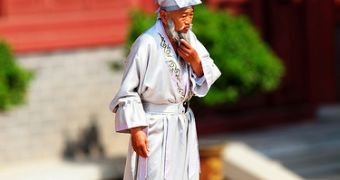Tai Chi has proved to relieve arthritis pain and improve reach, balance and overall well-being, according to the results of the largest study to date, carried out by the Arthritis Foundation's Tai Chi.
For those who do not know this, Tai Chi is a Chinese system of slow meditative physical exercise designed especially for self-defense and meditation, which improves relaxation, balance and health.
For the study, Leigh Callahan, PhD, the study's lead author, associate professor in the University of North Carolina at Chapel Hill School of Medicine and a member of UNC's Thurston Arthritis Research Center, recruited 354 participants, from 20 sites in North Carolina and New Jersey, which were randomly divided into two groups.
The intervention group started a Tai Chi course immediately, twice a week for a period of eight weeks, while the second group was a delayed control group.
All the participants were evaluated at baseline and after eight weeks, time after which the control group also started the Tai Chi course.
The criteria for choosing the participants were rather strict: they not only had to have any type of self-reported, doctor-diagnosed arthritis, be at least 18 years old and able to move independently without assistance, but they also had to be unable to perform Tai Chi standing (if they could perform Tai Chi seated, they were accepted).
The researchers measured everything: self-reports of pain, fatigue and stiffness, physical function performance in daily activities, the overall general health and they even carried out psychosocial measures, like perceived helplessness and self-efficacy.
The measurement of physical performance included timed chair stands – a measure of lower extremity strength, gait speed – both normal and fast, and a single leg stance and a reach test – two ways of measuring balance.
After the eight weeks of Tai Chi, the participants reported moderate improvements in pain, fatigue and stiffness, but also a higher feeling of well being and much better balance or reach.
Callahan said that their ability to reach while maintaining balance also improved.
“Our study shows that there are significant benefits of the Tai Chi course for individuals with all types of arthritis, including fibromyalgia, rheumatoid arthritis and osteoarthritis,” he explained.
“We found this in both rural and urban settings across a southeastern state and a northeastern state.”
The results will be presented today at the annual scientific meeting of the American College of Rheumatology in Atlanta.

 14 DAY TRIAL //
14 DAY TRIAL //